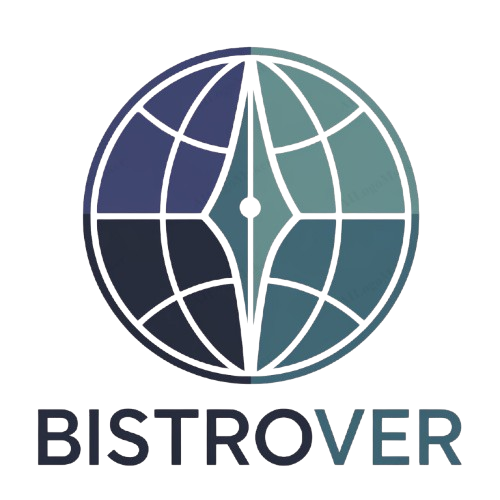Computer Telephony Integration (CTI): What It Is and How It Works
What is Computer Telephony Integration (CTI)?
Computer telephony integration also referred to as CTI is a technique by which computers interface with the telephone network to blend voice and data applications. These advancements improve interaction patterns within organizations because communication technologies increase the efficiency of interactions. By integrating telephone systems with computer networks, CTI becomes a decisive element of contemporary business communications and effectively helps to increase organizational efficiency as well as customer satisfaction.
How CTI works
CTI operates through a link between the telecommunication networks of a business and the computing systems of the same business by ensuring that the two share information. The integration usually includes a program and system, termed computer telephony integration software, together with telephony hardware like telephony boards and VoIP gateways.
For instance, if there is a call the CTI can bring up information about the person calling on the computer screen of the representative, this way the representative can work through the issue with more efficiency while personally connecting with the caller. They also can let people save time as CTI can provide the features of automated call routing, call logging, and generating reports.
Types of CTI
CTI solutions come in various forms, each designed to cater to specific business needs and technological environments. Here’s a closer look at the different types of CTI:
Desktop integration: This method integrates telephony functions into users’ desktops, allowing employees to make and receive calls through their computers using features like click-to-dial and screen popping for caller information.
Server-based integration: Centralized at the server level, this CTI solution is ideal for larger organizations, providing scalability and centralized management of telephony functions across the enterprise.
Middleware integration: Acting as a bridge between software applications and telephony systems, middleware CTI ensures seamless communication and data exchange, ideal for businesses with complex, multi-system environments.
Browser-based integration: Gaining popularity with cloud computing, this type allows users to access telephony functions via web browsers, simplifying implementation and maintenance by removing the need for specific hardware or software installations.
Each CTI type offers unique features and benefits, making it essential to evaluate your business needs and technological landscape before choosing the best solution.
Features of CTI
A robust CTI solution should include the following features:
Omnichannel support: A robust CTI solution offers omnichannel support across voice, email, SMS, chat, and social media, enabling agents to engage customers seamlessly through a single interface. It captures all interactions and stores them in a centralized database for easy access and analysis.
PCI compliance: Essential for businesses handling credit card transactions, PCI compliance ensures the CTI solution meets Payment Card Industry Data Security Standards, protecting sensitive customer data through encryption and controlled access.
Intelligent call routing: CTI intelligently routes calls based on caller information, agent availability, and skill sets, enhancing customer satisfaction and reducing wait times. It connects customers to the right agent while allowing managers to monitor and adjust call queues in real-time.
Reporting and analytics: CTI provides real-time and historical data on call metrics, helping managers assess system effectiveness, identify bottlenecks, and optimize workflows. Analytics track agent productivity, customer satisfaction, and revenue impact for informed decision-making.
Incoming and outgoing calls: CTI manages both incoming and outgoing calls, enabling agents to initiate calls from their computers, monitor durations, and transfer calls seamlessly. This enhances call traffic management and agent efficiency.
Advanced calling capabilities: CTI includes features like conference calling, call transfers, call recording, and call queuing, improving productivity and customer experience. It allows agents to collaborate, ensure compliance, and inform customers of wait times.
Integrated customer data: By integrating with systems like CRMs, CTI provides agents with essential customer data, enabling personalized interactions and tailored solutions. This integration helps track customer journeys and enhance retention.
The benefits of CTI integration
Computer Telephony Integration (CTI) technology is essential for contact center operations, enabling seamless collaboration between telephony systems and computers for more efficient call handling. Implementing a CTI solution, particularly in a contact center VoIP environment, offers several benefits:
Preferred voice communication: Many customers still favor voice as their main communication channel. CTI integration improves voice management, leading to greater customer satisfaction and loyalty.
Empowered agents: By providing access to customer data, such as purchase history and prior interactions, CTI helps agents understand and address customer needs, creating a more productive work environment.
24/7 self-service options: CTI software automates tasks like call logging and routing, allowing agents to focus on quality service. Self-service features, such as Interactive Voice Response (IVR), give customers quick information access, reducing wait times.
Improved collaboration: Integrated customer data enables agents to swiftly access information and transfer customers to the appropriate departments, enhancing cross-functional teamwork. Haloocom’s CTI solutions streamline access to CRM data, improving overall customer experiences.
Challenges and considerations
While CTI offers numerous benefits, certain challenges and considerations may arise during implementation:
- Integration complexity: Integrating CTI with existing systems can be complicated. It requires a thorough understanding of your infrastructure and the CTI technology itself. Proper planning and execution are essential for seamless integration.
- Data security and privacy: Handling sensitive customer information demands stringent security measures to protect against breaches and ensure compliance with regulations. Implementing robust security protocols is crucial for maintaining customer trust.
- Cost of implementation: The initial investment for CTI can be significant, including software, hardware, and specialized staff for management. However, the long-term benefits often justify these upfront costs.
- User adoption: Ensuring staff fully understands and adopts the CTI system is critical for success. Comprehensive training and ongoing support can help mitigate this challenge.
Examples of CTI applications
CTI technology offers various applications that enhance communication processes, including:
Interactive Voice Response (IVR): IVR systems mean that the call is directed according to voice prompts from the customer’s self-service and relieving the workloads of the agents.
Customer profiles: CTI associates the caller number with the contact within your CRM to provide the agent on the call with customers’ detailed information.
Automatic Call Distribution (ACD): ACD systems apply rules for the distribution of the call, data collection of the call, and call center overflows to ensure the customer gets to the right agents as fast as possible.
Common phone controls: With CTI, users can accomplish phone tasks which include; answering and putting down calls, and transferring calls among others while the computer puts calls on hold.
Advanced calling capabilities: Some of CTI’s features include conference calls, call transfers, call recording, and call queuing to optimize the performance of the call center agents as well as the customer.
Wrapping up
Computer Telephony Integration (CTI) is a game-changing technology that merges telecommunications with computer systems, boosting communication efficiency in organizations. It enables seamless interactions between voice and data applications, enhancing workflows and customer satisfaction.
With tailored CTI solutions offering features like intelligent call routing and integrated customer data, organizations can overcome challenges like integration complexity and data security. Ultimately, the benefits of CTI—empowering agents, fostering collaboration, and improving customer experiences—make it essential for modern business communications.







